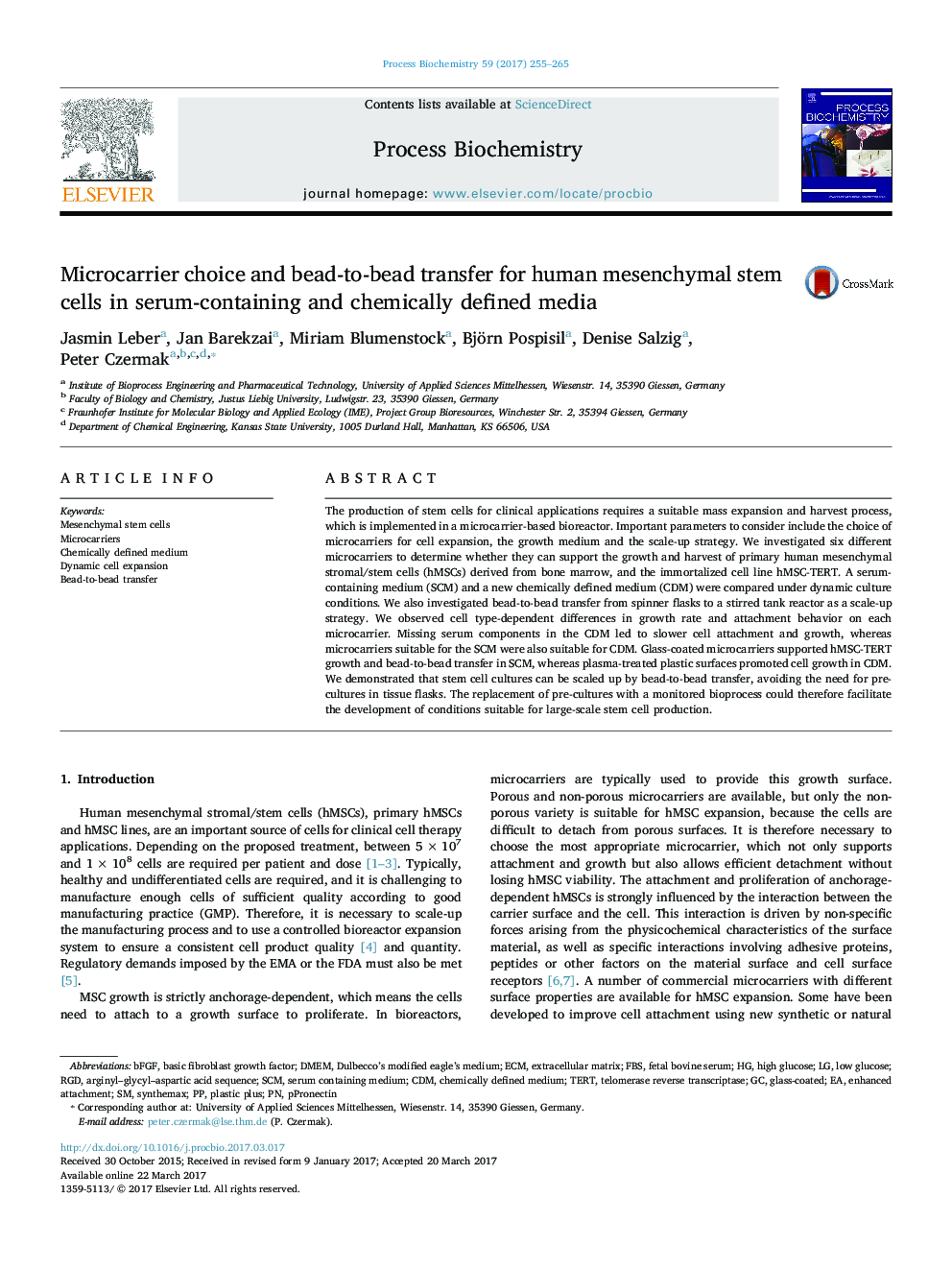| Article ID | Journal | Published Year | Pages | File Type |
|---|---|---|---|---|
| 6452960 | Process Biochemistry | 2017 | 11 Pages |
â¢Suitable microcarrier for attachment and growth is depended on cells source.â¢A chemically defined medium is first described for microcarrier expansion of hMSC.â¢Bead-to-bead transfer is carried out via bridging and migration of cells.
The production of stem cells for clinical applications requires a suitable mass expansion and harvest process, which is implemented in a microcarrier-based bioreactor. Important parameters to consider include the choice of microcarriers for cell expansion, the growth medium and the scale-up strategy. We investigated six different microcarriers to determine whether they can support the growth and harvest of primary human mesenchymal stromal/stem cells (hMSCs) derived from bone marrow, and the immortalized cell line hMSC-TERT. A serum-containing medium (SCM) and a new chemically defined medium (CDM) were compared under dynamic culture conditions. We also investigated bead-to-bead transfer from spinner flasks to a stirred tank reactor as a scale-up strategy. We observed cell type-dependent differences in growth rate and attachment behavior on each microcarrier. Missing serum components in the CDM led to slower cell attachment and growth, whereas microcarriers suitable for the SCM were also suitable for CDM. Glass-coated microcarriers supported hMSC-TERT growth and bead-to-bead transfer in SCM, whereas plasma-treated plastic surfaces promoted cell growth in CDM. We demonstrated that stem cell cultures can be scaled up by bead-to-bead transfer, avoiding the need for pre-cultures in tissue flasks. The replacement of pre-cultures with a monitored bioprocess could therefore facilitate the development of conditions suitable for large-scale stem cell production.
Graphical abstractDownload high-res image (184KB)Download full-size image
